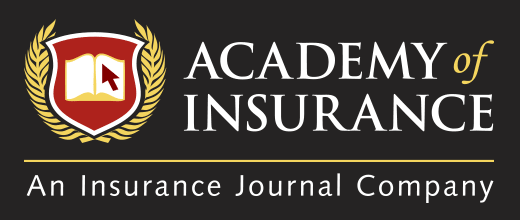Please note- this can be purchased as a 7-pack or individually. Links below for individual purchases.
Part 1- Risk Management Theory & Applications
"Risk management" and "Insurance" are not synonymous. Risk management is a process combining methods for reducing or avoiding an undesirable event with sources for covering the adverse financial losses that result from the occurrence of the undesired event. Insurance is but one source risk managers use to finance these adverse economic losses.
This session:
- Details the multi-step risk management process
- Delineates the various levels of financial impact
- Defines and differentiates the concepts of "Risk Control" and "Risk Financing"
- Discusses the three "Rules of Risk Management"
- Develops and presents an advanced frequency/severity matrix
You may purchase this class individually, here.
Part 2- What Makes a Risk Insurable
Insurance, in its role as a financing mechanism, combines two concepts – risk transfer and risk sharing. Individuals and entities exchange a potentially large, unknown financial loss for a small known investment (known as a premium) – this is risk transfer. The premiums collected from all insureds are, in a sense, pooled to pay for any losses that occur – this is risk sharing.
Although conceptually simple, the effective and efficient combining of risk transfer and risk sharing within the insurance mechanism requires many moving parts to produce the desired result.
Students in this course:
- Analyze the contributions and costs of insurance in society
- Combine the "primary" and "necessary" elements required of an "insurable risk"
- Discuss probability theory and its relationship to insurance
- Apply the "Law of Large Numbers" to probability theory and insurance
You may purchase this class individually, here.
Part 3- The Legal and Contractual Aspect of Insurance
Insurance is subject to the standard law of contracts; but beyond simple contract law, insurance contracts are subject to unique provisions and requirements. One part of insurance contract law that no one talks about (especially claims adjusters) is that the policy is the minimum that must be done, the carrier can always do more.
And how does the doctrine of reasonable expectations relate to insurance contracts.
In this session, students:
- Discuss the basic provisions of general contract law
- Detail the unique legal characteristics within insurance contracts
- Highlight the concept of "reasonable expectations" how insurance contracts are regulated
- Touch on the general construction of the insurance contract
You may purchase this class individually, here.
Part 4 & 5- Crimes, Torts, Negligence, Legal Liability and Insurance
"We will pay those sums that the insured becomes legally obligated to pay as damages because of 'bodily injury' or 'property damage' to which this insurance applies." So begins Coverage Part A of the commercial general liability policy. But how does one become legally liable?
Legal liability is liability imposed by law on the person or entity responsible for the financial injury or damage suffered by another party or individual and can arise from intentional acts, unintentional acts or contracts (express or implied).
This two-part session will:
- Defines and differentiates "public wrongs" and a "private wrongs"
- Discusses the various types of "Torts"
- Details the concept of "Negligence"
- Defines damages
- Breaks down causation and ultimate liability
- Introduces several common and unique legal theories related to degrees of negligence
You may purchase this class as a 2-part class, here.
Part 6 & 7- COPE
Construction, Occupancy, Protection and Exposure ("COPE") are the same four basic elements of underwriting data real property underwriters have been using for nearly 300 years. Each of these four basic data points plays an important part in the property underwriting process.
Anyone writing property insurance will benefit from this class.
• Construction: Students will learn how to determine the property construction class (1-6); why size matters; and how age affects the underwriting decision. We will also discuss mixed-construction issues.
• Occupancy: In addition to occupancy issues, how a particular insured's hazards associated with occupancy will be discussed.
• Protection: Sprinkler systems, fire extinguishers, alarm systems, fire doors and fire walls and public fire protection are the primary protection mechanisms evaluated by underwriters. The basics of each are discussed in the class.
• Exposure: What external factors affect the insured property? Some of these exposures are discussed in this section of the course.
You may purchase this class as a 2-part class, here.
